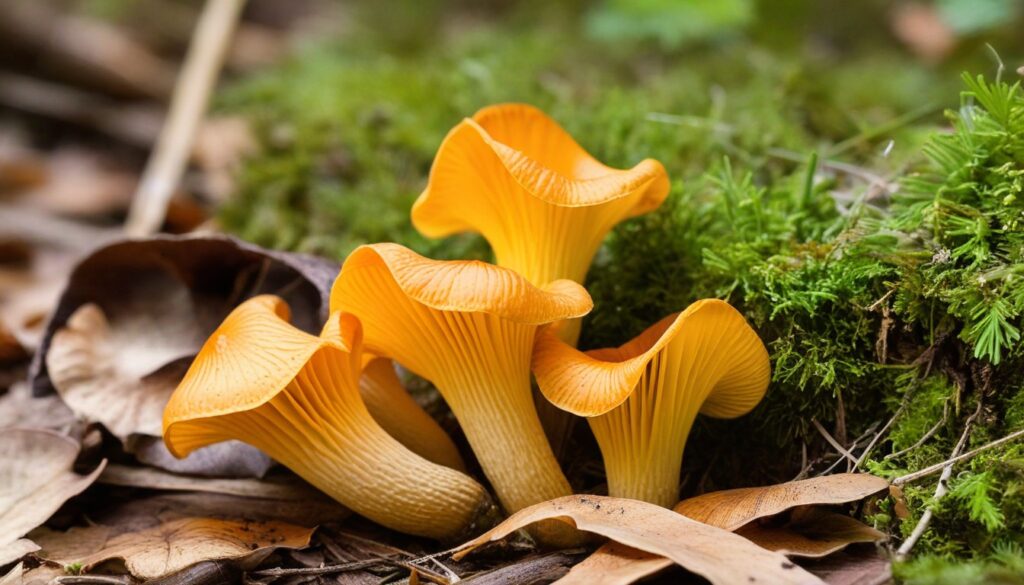If you’re an adventurous food enthusiast looking to embark on a mushroom-hunting expedition, Texas is the place to be. Texas is home to an abundance of Chanterelle mushrooms – a culinary treasure highly prized by chefs and food enthusiasts alike. This comprehensive guide will provide you with all the foraging tips, identify the best spots to hunt for Chanterelle mushrooms in Texas, and teach you how to identify these unique fungi correctly. From cleaning and storing to cooking with Chanterelle mushrooms, we’ve got you covered.
Key Takeaways:
- Chanterelle mushrooms are highly prized for their delicate flavor, vibrant color, and unique trumpet-shaped appearance.
- Texas is a promising location for Chanterelle mushroom hunting, thanks to its variety of ecosystems.
- It’s crucial to follow ethical and sustainable foraging practices to protect the environment and ensure the longevity of natural resources.
- Safety is essential when foraging for mushrooms, and you should always prioritize it. Knowing how to identify poisonous look-alike mushrooms is an essential safety tip.
- The cleaning and storing process of Chanterelle mushrooms is crucial to maintain their quality and flavor, making them a true culinary delicacy.
What are Chanterelle Mushrooms?
Chanterelle mushrooms are a highly prized and sought after culinary delicacy known for their distinctive trumpet-shaped appearance and delicate flavor. These mushrooms are typically golden or orange in color and have a fruity aroma that adds a unique depth of flavor to a variety of dishes.
Apart from their vibrant color and unique shape, Chanterelle mushrooms are also highly nutritious and boast plenty of health benefits. They are packed with vitamins and minerals, including vitamin D, iron, and potassium, and are known to have antioxidant and anti-inflammatory properties that can help boost the immune system and alleviate inflammation in the body.
“Chanterelle mushrooms are coveted by chefs and food enthusiasts alike for their unique flavor and unmistakable appearance. They are a culinary treasure that has withstood the test of time and continue to be in high demand in kitchens around the world.”
These mushrooms grow wild in a variety of wooded areas, including deciduous forests, boreal forests and even along coastal regions. They are typically found in late summer and fall, depending on the weather and environmental conditions.
If you’re interested in foraging for Chanterelle mushrooms, it’s important to understand their unique characteristics to ensure a successful hunt. Keep reading to learn more about the best foraging tips and spots to discover these highly coveted mushrooms in Texas.
The Appeal of Chanterelle Mushrooms
Chanterelle mushrooms are highly regarded as culinary treasures by chefs and food enthusiasts alike. These mushrooms are known for their delicate texture, vibrant color, and earthy, nutty flavor, making them incredibly versatile in various dishes. The uniqueness of Chanterelle mushroom’s trumpet-shaped caps paired with their vibrant yellow-orange color capture the attention of foodies, providing an excellent aesthetic for food plating.
While Chanterelle mushrooms are delectable, they are not found in abundance year-round, providing them a level of exclusivity and desirability. The rarity and demand of these mushrooms have made them a hot commodity in the culinary world, driving up their prices significantly.
Many professional chefs and restaurants source Chanterelle mushrooms from local foragers, ensuring the freshness, quality, and authenticity of these highly valued delicacies. Their short window of availability make them a seasonal delicacy, which is why it is crucial to know when and where to forage for Chanterelle mushrooms.
Foraging Basics: Where and When to Look
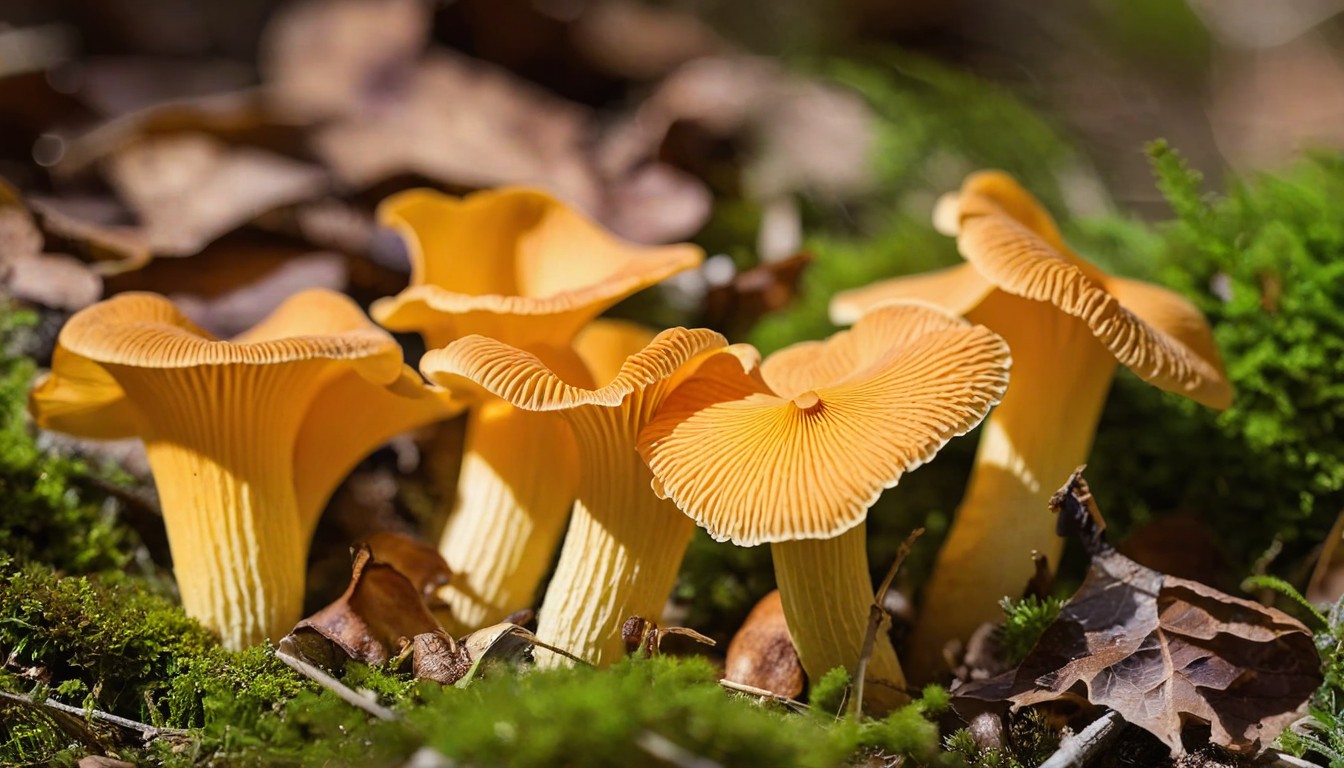
Now that you know what Chanterelle mushrooms are, it’s time to start foraging for them! Here are the basic steps to follow:
- Know where to look: Chanterelle mushrooms thrive in damp, wooded areas, typically around coniferous trees. Look for them in areas with plenty of shade and moisture, such as near streams or in damp forests.
- Know when to look: Chanterelles usually start appearing in late spring or early summer and can be found until fall. The best time to go foraging is after a good rain, which helps stimulate mushroom growth.
- Bring a mushroom knife: A mushroom knife is specifically designed for foraging and has a curved blade, allowing you to easily cut the mushroom at the base without damaging the rest of the fungus.
- Bring a basket or bag: After harvesting Chanterelle mushrooms, be sure to put them in a basket or bag. This way, the spores can fall back to the ground and help ensure the growth of future mushrooms.
Follow these simple tips, and you’ll be well on your way to foraging your own Chanterelle mushrooms!
Identifying Chanterelle Mushrooms
When foraging for Chanterelle mushrooms, it’s essential to know how to identify them correctly. Chanterelles have a distinct trumpet or vase-like shape, and depending on the species, they range in color from yellow to orange or reddish-brown. Often, they have a ridged, veined underside, and the ridges run down the length of the stem.
The cap of the Chanterelle mushroom is smooth and slightly convex, while the stem is solid and firm. One characteristic of Chanterelle mushrooms is their aroma. They have a fruity, apricot-like fragrance that is quite distinctive, helping to differentiate them from other mushroom species.
Another way to identify Chanterelles is by their gills. They don’t have typical gills but instead have ridges or folds that are sharply defined and run lengthwise along the underside of the cap. Chanterelles also tend to grow in clusters, often hidden beneath leaf litter or among grasses and low-lying plants in moist areas.
It’s worth noting that Chanterelle look-alikes exist, such as the Jack-O’-Lantern mushroom, which is poisonous and can cause illness if ingested. It’s vital to consult with an experienced forager or mycologist before collecting any wild mushrooms and to follow proper identification protocols to ensure your safety.
Tools and Equipment for Foraging
Foraging for Chanterelle mushrooms requires a few essential tools and equipment to ensure a successful hunt. These items will not only help you identify and harvest the mushrooms but also keep you safe and comfortable during your trip. Here are some of the must-have foraging tools and equipment:
Item | Why You Need It |
|---|---|
Knife | A sturdy and sharp knife is essential for harvesting Chanterelle mushrooms. You will need to cut the mushrooms at the stem cleanly, without damaging other parts of the mushroom or the surrounding vegetation. |
Basket or Bag | A basket or bag with ample space to store your Chanterelle mushrooms will come in handy during your hunt. These mushrooms are delicate and can get damaged easily, so a container that allows for airflow and avoids squishing them is best. |
Gloves | Gloves will protect your hands from scratches, insect bites, and stings while foraging. |
First Aid Kit | While foraging, minor injuries like cuts or scrapes can happen. A basic first aid kit with bandages, antiseptic, and other items should always be packed. |
Map and Compass | Knowing where you are and which direction you are heading in will help you avoid getting lost and ensure a safe and enjoyable foraging experience. |
Water and Snacks | Foraging can be a physically demanding activity, so bringing water and snacks will keep you hydrated and energized throughout your hunt. |
These are just a few of the essential items to bring on your Chanterelle mushroom hunt. Make sure to also research and bring other tools and equipment based on your specific needs and circumstances. Remember to stay safe and enjoy the adventure of foraging!
Ethical and Sustainable Foraging Practices
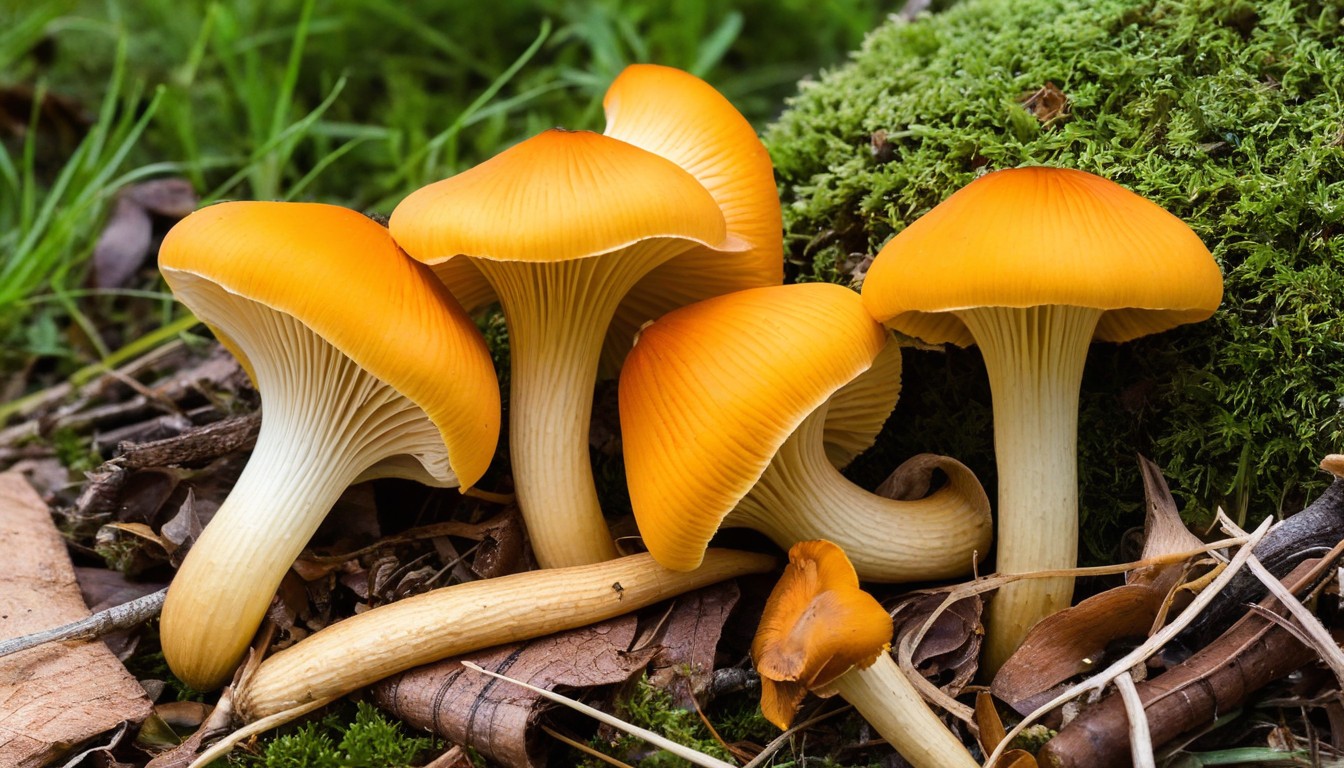
Foraging for Chanterelle mushrooms is an exciting adventure that allows you to immerse yourself in nature while discovering culinary treasures. However, it’s important to forage ethically and sustainably to protect the environment and preserve our natural resources for future generations.
The Importance of Ethical Foraging
Ethical foraging involves respecting the natural environment and the living organisms within it. When foraging, it’s important to have a thorough understanding of the ecosystem and the species you are hunting for, so you don’t accidentally damage other plants or animals in the process.
“Foraging responsibly means protecting the environment from harm caused by our search for food.”
Sustainable Foraging Practices
Sustainable foraging is all about taking only what you need and leaving the rest for nature. Over-harvesting can cause severe damage to the environment and lead to the depletion of natural resources. By adopting sustainable foraging practices, you can minimize your impact on the environment and ensure the longevity of our natural resources.
Minimizing Your Impact While Foraging
There are several things you can do to minimize your impact while foraging. Some of these include:
- Forage only in designated areas or private lands with the owner’s permission.
- Avoid harvesting mushrooms that are too young or too old, as these are crucial for the mushroom’s survival and growth.
- Use scissors or a knife instead of pulling or tearing the mushrooms from the ground to minimize soil disturbance.
- Avoid trampling on surrounding plants or disturbing other animals in the area.
Hunting Chanterelle Mushrooms in Texas
For those looking to forage for Chanterelle mushrooms, Texas offers a variety of ecosystems to explore. From the lush forests of East Texas to the rocky terrain of West Texas, there are numerous spots to hunt for these culinary treasures.
The prime time for Chanterelle mushroom hunting in Texas is typically from mid-October to early December, depending on the weather conditions and location. In general, look for areas with ample rainfall and deciduous trees, such as oaks and elms.
Top Spots for Chanterelle Mushroom Hunting in Texas
Location | Features |
|---|---|
Morris Williams Golf Course, Austin | Large populations of Chanterelle mushrooms found near streams and in wooded areas |
The Sam Houston National Forest, Montgomery and San Jacinto counties | A variety of habitat types, including pine and hardwood forests, provide ideal environments for Chanterelle mushrooms |
Big Thicket National Preserve, Beaumont and Tyler counties | Rich biodiversity and varied terrain make this a hotspot for Chanterelle mushroom hunting |
Guadalupe Mountains National Park, Culberson and Hudspeth counties | High elevation and cooler temperatures create a unique environment for Chanterelle mushroom growth |
Remember to always practice ethical and sustainable foraging practices by only taking what you need and leaving the rest for others to enjoy. Happy hunting!
Safety Tips for Mushroom Foraging
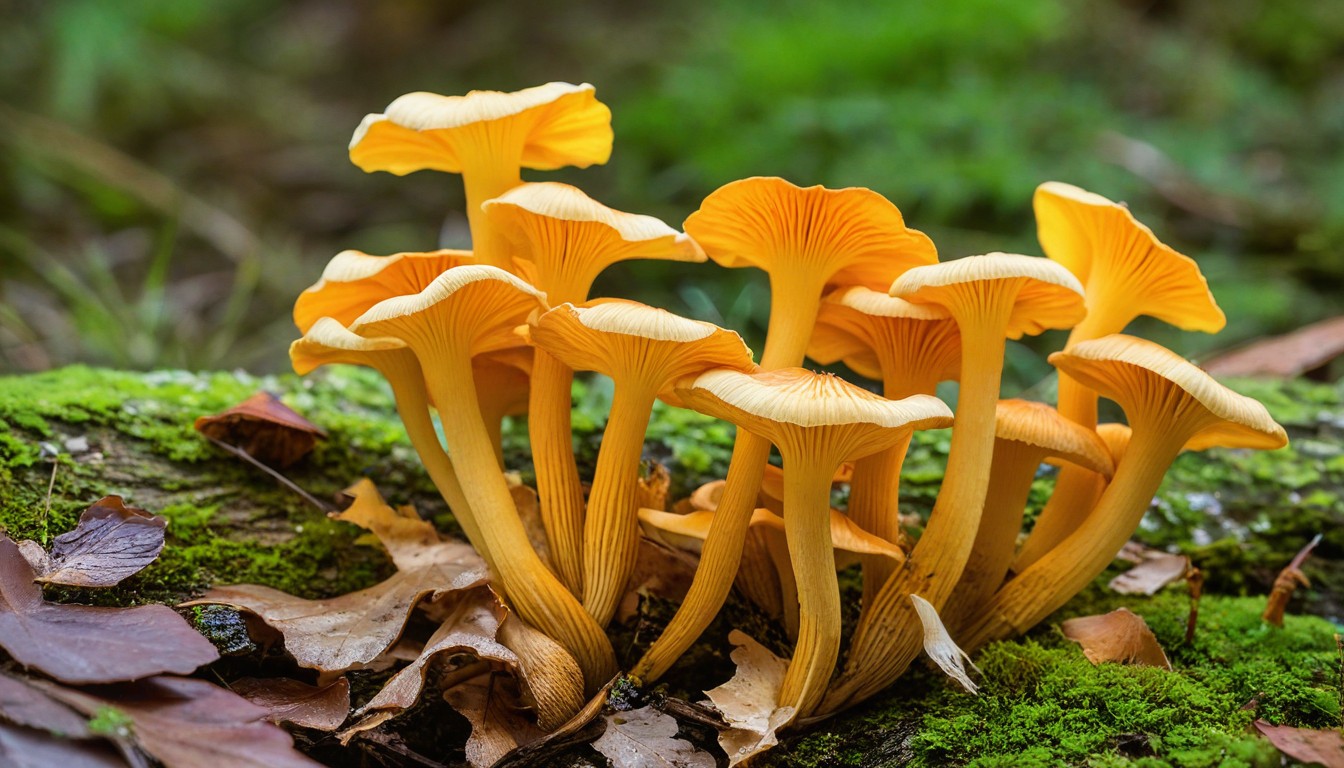
Foraging for Chanterelle mushrooms can be a fun and fulfilling experience, but it’s crucial to prioritize your safety. Here are some essential safety tips to keep in mind during your mushroom hunting adventures:
1. Identify the Mushroom Correctly
One of the most important aspects of mushroom foraging is being able to accurately identify the mushrooms you find. Chanterelle mushrooms are easily identifiable, but there are many toxic look-alikes that can be harmful if consumed. Make sure you thoroughly research and learn how to identify Chanterelle mushrooms before going out to hunt.
2. Wear Proper Clothing and Gear
When foraging for mushrooms, it’s important to wear appropriate clothing and gear. This includes long pants and sleeves, sturdy shoes, gloves, and a hat. You should also bring a basket or bag to collect your mushrooms and a knife to help you harvest them safely.
3. Avoid Areas with Pollution
Chanterelle mushrooms grow wild in forests and other natural areas, so it’s important to avoid foraging in areas with high pollution levels. This includes areas next to busy roads, industrial sites, or agricultural fields that have been heavily sprayed with pesticides.
4. Stay Hydrated and Bring Snacks
Foraging for mushrooms can be physically demanding, so it’s important to stay hydrated and bring snacks to keep your energy levels up. Pack plenty of water, and consider bringing trail mix, granola bars, or other lightweight snacks to keep you going throughout the day.
5. Cook Your Mushrooms Thoroughly
Before consuming any wild mushrooms, make sure to cook them thoroughly to kill any potential bacteria or toxins that may be present. This is especially important for Chanterelle mushrooms, which can cause mild stomach upset if consumed raw.
By following these safety tips, you can ensure a safe and enjoyable Chanterelle mushroom foraging experience. Happy hunting!
Cleaning and Storing Chanterelle Mushrooms
Congratulations, you’ve successfully foraged for Chanterelle mushrooms! Now that you’ve got your hands on these delicious treasures, it’s essential to know the proper techniques for cleaning and storing them to maintain their delicate flavor and texture.
To begin with, it’s crucial to clean the mushrooms thoroughly to remove any dirt or debris that may affect their taste. While you may be tempted to wash them with water, this is not recommended as Chanterelle mushrooms absorb moisture easily and become slimy. Instead, use a soft-bristled brush or a damp cloth to gently clean off any dirt or debris.
Next, inspect the mushrooms carefully and remove any damaged or discolored parts, including the stems. Chanterelle mushrooms have a nutty and earthy flavor, and discarding the stems ensures you get the most out of the mushroom’s cap, which is the most sought after part.
Once you’ve cleaned the mushrooms, it’s time to store them properly. Chanterelle mushrooms are delicate and must be stored in a cool, dry place, away from direct sunlight. Avoid storing them in plastic bags, as this can cause them to sweat and spoil quickly. Instead, use a paper bag or a breathable container such as a mesh bag to store them.
If you’re not planning to use the mushrooms immediately, you can also freeze them. However, do note that the texture of Chanterelle mushrooms changes when frozen and thawed, and they may lose some of their delicate flavor. To freeze them, clean and dry the mushrooms thoroughly, then store them in airtight containers or freezer bags. They can be stored in the freezer for up to six months.
Cooking with Chanterelle Mushrooms
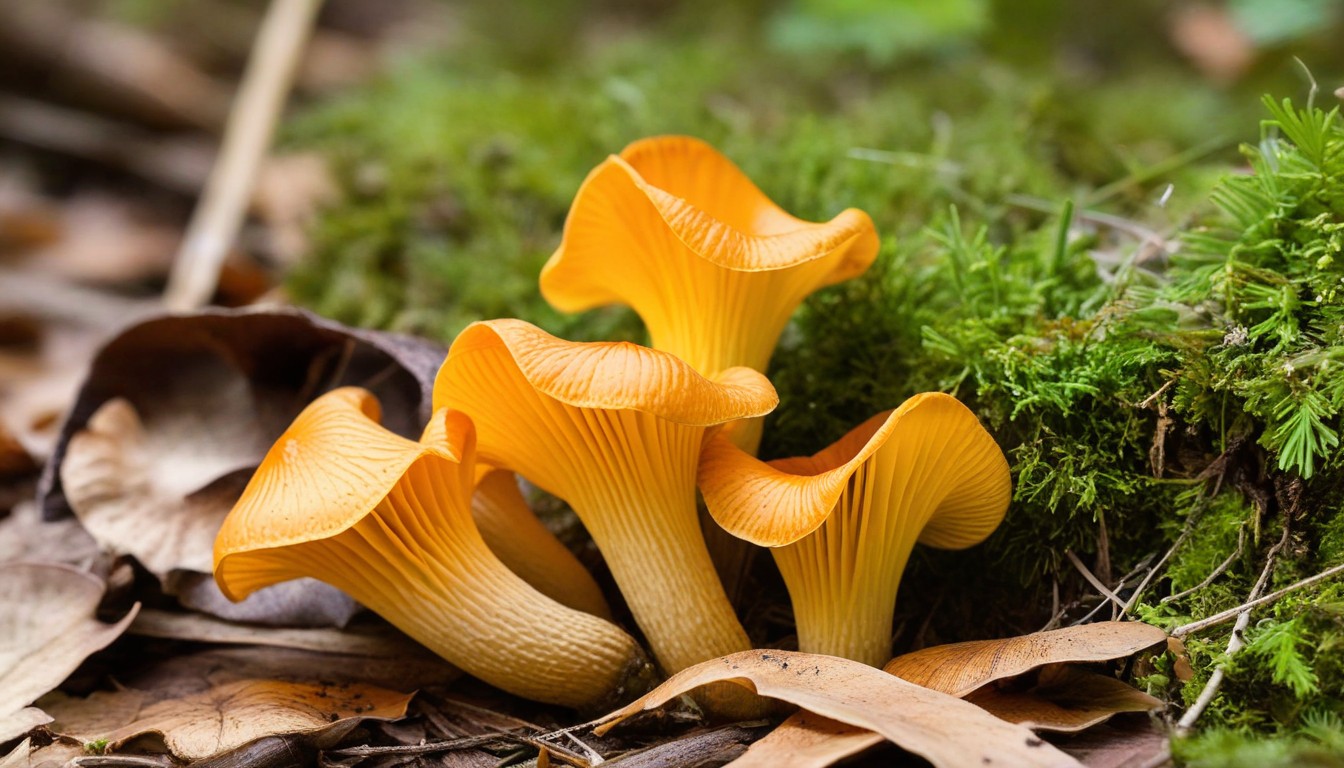
Chanterelle mushrooms are a versatile ingredient that can elevate any dish with their delicate and nutty flavor. Here are a few recipes to inspire your culinary adventures with these coveted mushrooms:
Chanterelle Mushroom Risotto
Serves 4
Ingredients: | Instructions: |
|---|---|
|
|
Chanterelle Mushroom Sauce
Makes 2 cups
Ingredients: | Instructions: |
|---|---|
|
|
Experiment with different recipes and cooking methods to discover new ways to showcase the unique and delicious flavors of Chanterelle mushrooms in your dishes. Happy cooking!
Conclusion
Thank you for taking the time to read our guide on Chanterelle mushrooms in Texas. We hope that you have found the information on foraging tips and spots useful and informative. Armed with this knowledge, you are now ready to embark on your own mushroom-hunting adventure and discover these culinary treasures for yourself.
Remember, responsible foraging practices are crucial for preserving the environment and ensuring the longevity of our natural resources. Always follow ethical and sustainable practices when foraging, and be sure to prioritize safety at all times.
Happy hunting, and may your foraging expeditions be fruitful and enjoyable!
Don’t forget to share this article with your fellow mushroom enthusiasts and spread the word about Chanterelle mushrooms in Texas.
FAQ
What are Chanterelle Mushrooms?
Chanterelle mushrooms are highly prized and distinctive mushrooms known for their delicate flavor, vibrant color, and unique trumpet-shaped appearance.
Why are Chanterelle Mushrooms considered culinary treasures?
Chanterelle mushrooms are highly sought after by chefs and food enthusiasts for their versatility in various dishes and their earthy and nutty flavor.
Where and when should I look for Chanterelle Mushrooms?
Chanterelle mushrooms can be found in certain habitats such as forests and woodlands, and they thrive during the late summer and fall seasons.
How do I identify Chanterelle Mushrooms?
Chanterelle mushrooms can be identified by their distinct color, trumpet-shaped appearance, and the presence of false gills on the underside of the cap.
What tools and equipment do I need for mushroom foraging?
Some essential tools and equipment for mushroom foraging include a mushroom knife, a basket or mesh bag for collecting mushrooms, sturdy shoes, and protective clothing.
Why is ethical and sustainable foraging important?
Ethical and sustainable foraging practices ensure the protection of the environment and the long-term availability of natural resources. It also helps maintain the delicate balance of ecosystems.
What are the best spots in Texas for hunting Chanterelle Mushrooms?
Texas offers various ecosystems that are ideal for Chanterelle mushroom hunting. Some popular spots include national and state parks, forests, and areas with rich organic soil.
What safety tips should I follow during mushroom foraging?
It’s important to prioritize safety while foraging for mushrooms. Some tips include properly identifying mushrooms, avoiding risky environments, and consulting with experts or experienced foragers.
How do I clean and store Chanterelle Mushrooms?
To clean Chanterelle mushrooms, gently brush off any dirt or debris. Store them in a paper bag or a breathable container in the refrigerator, and use them within a few days for the best flavor.
What are some delicious recipes and cooking techniques using Chanterelle Mushrooms?
Chanterelle mushrooms can be used in a variety of dishes such as pasta, risotto, sautés, and soups. They pair well with herbs, garlic, butter, and cream-based sauces.

